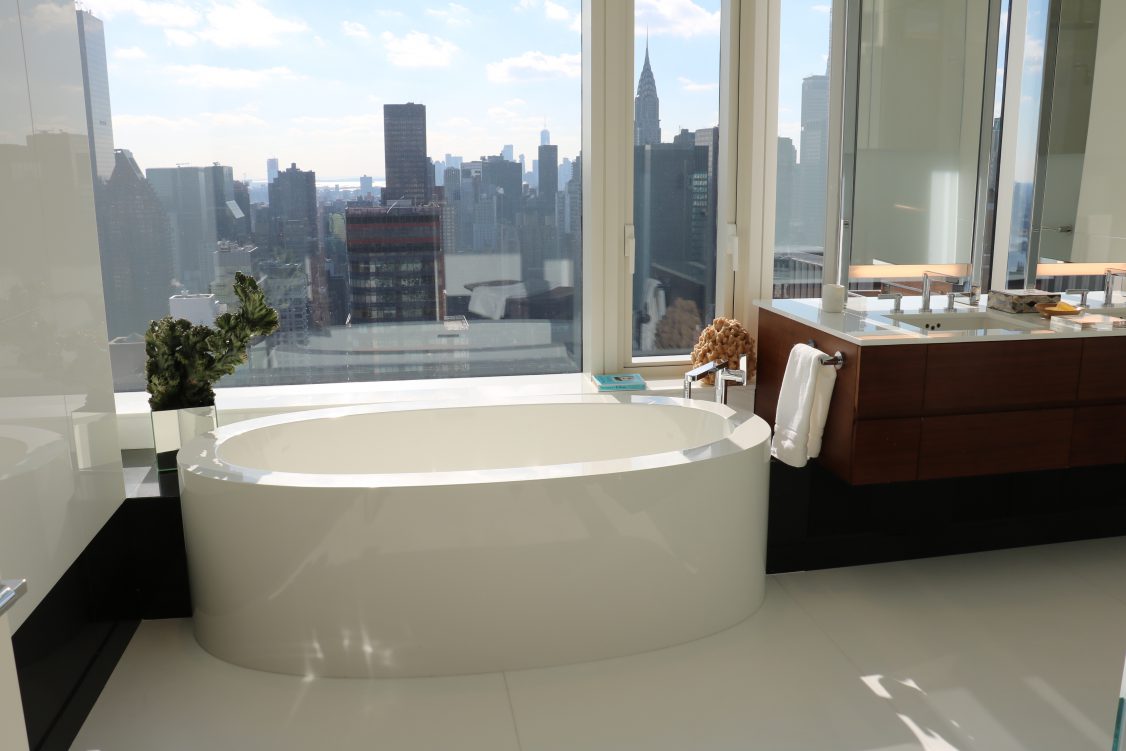
In 2015, the bold concept of a curvy tower at 252 East 57th Street, New York, was presented to an audience at the Glass Performance Days conference. At that time, building construction was just beginning, and no one was certain such a novel idea could be realized. But it was − and became a great success story, an icon of beauty. Here’s the story behind this building with a twist.
Over the last years, demand for curved glass has surged, as designers and architects more often specify custom glass to realize their innovative design ideas. It’s not surprising. For the first time in architectural history, designers know they can actually build some of their most ‘twisted’ design dreams.
Bent glass makes any architecture extraordinary. This is especially true when it comes to skyscrapers. Soaring buildings of curved glass reflect all the moving, shining gems of the sky, clouds and cities in the sun.

Aalto 57, 252 East 57th Street, Image: Paul Öhrnberg
If you’re walking down the streets of modern New York, bent glass buildings are hard to miss. Recently, the prominent curvaceous structure joined these ranks on the eastern end of Manhattan’s ‘billionaire’s row’– a stretch of 57th Street known for its pricey residential skyscrapers.
The new tower at 252 East 57th Street, designed by Roger Duffy of Skidmore, Owings & Merrill, only opened its doors half a year ago but is already a real success. On a street where most of the high-rise apartment houses are over 300 meters high, Duffy’s 65-story building may seem relatively short, with a height of only 217 meters. Nevertheless, it’s not short on astonishing features – and prices.
In terms of pricing, the rental price for a two-bedroom apartment is about USD 7,500, or EUR 6,100 per month. To buy a penthouse costs USD 37 million. Yet 80% of the building has already been sold or leased.
One of the factors allowing the owners to price the residences so high is the outstanding curved windows – ideal for spectacular city views. The shorty-skyscraper overlooks both the East River and Central Park. Elegantly curved floor-to-ceiling windows, providing breathtaking viewing angles, quickly became the building’s strongest selling point.

Aalto 57, 252 E 57 Street, interior. Image: Paul Öhrnberg
A lower portion of the tower – with 169 rental units – has been dubbed Aalto57. This is a witty nod to famous Finnish architect Alvar Aalto. Roger Duffy’s inspiration for the tower derived from the gentle curves of the iconic Aalto Vase, a large clear-glass vase the architect made in 1937 for the Savoy restaurant in Helsinki.
Skidmore, Owings & Merrill is at the heart of international skyscraper design. The firm has designed some of the world’s tallest buildings. These include the record-tallest Burj Khalifa in UAE (830 m), the quintessential work of the firm.
Even though the Aalto building does not feature such heights, it was still a unique and highly challenging project for Roger Duffy. As he describes it, most of the challenge was in taming the unruly curves that make this building distinct from other skyscrapers.

Roger Duffy, SOM Arcitects. Image: Paul Öhrnberg
The Aalto Vase was made of uniformly blown and formed glass, but the facade of a building is comprised of thousands of pieces of two-layered glass with an insulating layer between them. Integrating these layers into bent glass, while maintaining perfect glass quality, is what makes bending difficult.
Luckily, cutting-edge glass bending capabilities are finally here. Only recently, efficient and cost-affordable solutions have been introduced that handle what used to be costly and difficult. This triggered the use of bent glass in high-rise buildings.
In the case of 252 East 57th Street, an Italian glass manufacturing company used the latest Glaston glass production technology to realize Roger Duffy’s Finnish-inspired design.
Custom bent glass provides architects with a wealth of new design options and potential applications. Its use is still rare compared to the use of standard flat glass. But it will become increasingly more common as technologies advance, multiplying design possibilities as the cost of bending decreases.
In exteriors and interiors – in facades, spiral staircases, skylights, elevators, bridges, curtain walls and hundreds of other uses − the future of glass is clearly twisted.
Read more about bent glass in design:
Für den Glastory-Newsletter anmelden
Wir beantworten Ihre Fragen zur Glasverarbeitung. Teilen Sie uns Ihre Herausforderungen mit und wir versprechen, unser Bestes zu tun, um Ihnen zu helfen.
Comments are closed.